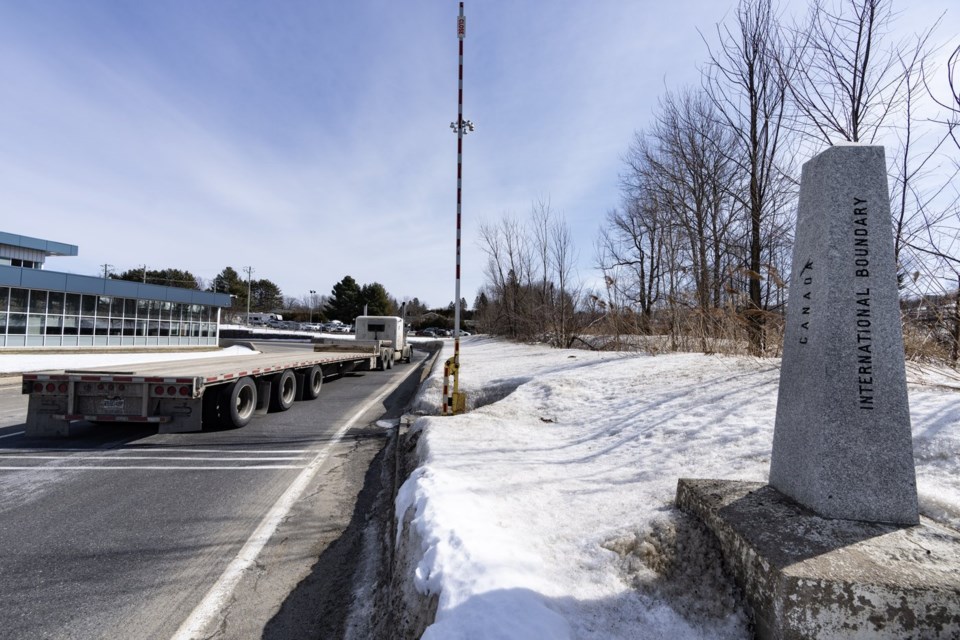TORONTO — More than two months of back-and-forth, false starts and changing plans in the trade war launched by the United States has made it hard to know what's in or out.
Wednesday is set to be another big day for tariffs as the latest pause in U.S. President Donald Trump's plan to add a 25 per cent import tax on Canadian goods expires. He has also said he plans to launch "reciprocal" tariffs against a variety of countries he sees as unfairly dealing with the U.S.
Confused yet? Here's a sector-by-sector look at where things stand, as of Tuesday afternoon.
Metals
The U.S. imposed 25 per cent tariffs on Canadian steel and aluminum products on March 12 — a notable step up from the 10 per cent duties that Trump imposed in his first term.
The latest round also has a stricter definition of what might be exempt, requiring that the metals be "melted and poured" in the U.S. for products later in the process to avoid tariffs. Trump is justifying the move by claiming it necessary on national security grounds.
In response to the metals tax, Canada has imposed, on a "dollar for dollar" basis, reciprocal tariffs totalling $29.8 billion. The counter-tariffs include $12.6 billion in steel products, $3 billion on aluminum products, plus $14.2 billion on a range of goods including tools, computer and servers, display monitors, sports equipment and cast-iron products.
Autos
The auto sector secured a reprieve in early March from tariffs on Canadian and Mexican products, but those are set to see 25 per cent tariffs imposed on April 3. The tariff situation for the sector keeps getting more complicated though as the U.S. administration tries to insulate U.S.-manufactured products within a highly integrated cross-border industry and limit the damage the tariffs themselves would cause.
The latest update saw Trump's executive order hold back on tariffs to automotive parts including engines, transmissions and electrical components, giving U.S. producers more time to adjust, but tariffs are due on them by May 3.
For the April 3 tariffs, vehicles that fall under the Canada-US-Mexico Agreement will be able to exempt some of the value of the vehicle depending on how much of it originated in the U.S., but the Trump administration is still figuring out how they plan to administer the exemptions.
Potash and Energy
As part of the first wave of 25 per cent tariffs on March 4, Trump also imposed 10 per cent tariffs on oil and gas from Canada, and after lobbying from U.S. farmers, also reduced the levy on potash to 10 per cent. Those tariffs were part of the big pause on tariffs covering just about everything that's set to expire Wednesday.
Lumber and Dairy
Trump has said he may hit Canadian lumber and dairy with "reciprocal" tariffs that reflect what he believes to be the trade barriers that U.S. exports face in Canada. Trump, who has long pushed against Canada's supply managed dairy industry, has complained that U.S. dairy exporters face tariffs of up to 250 per cent, while the U.S. has proposed to nearly triple anti-dumping duties on Canadian lumber on top of the general tariffs the sector will also face.
Everything Else
The U.S. imposed blanket 25 per cent tariffs on Canadian goods on March 4, but two days later it granted a nearly month-long hold for products that qualify under CUSMA. The pause is set to expire on Wednesday.
April 2 is also when Trump plans to announce numerous additional tariffs, the scope and scale of which is not yet clear. The U.S. has said it will announce country-specific tariffs that reflect what it believes are the trade barriers the U.S. faces in exporting to each country.
In retaliation for the initial March 4 tariffs, Canada imposed $30 billion worth of counter-tariffs on U.S. goods, and kept them on after the U.S. paused its tariffs for a few weeks.
The federal government has been consulting on its list of $125 billion in further tariffs it plans to impose if the U.S. goes ahead with its broad 25 per cent tariff.
This report by The Canadian Press was first published April 1, 2025.
The Canadian Press




